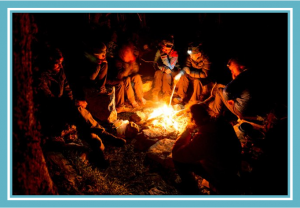General Information about Item:
- Genre: Material Lore – dish; Customary Lore – celebration, religious custom
- Language: Tagalog
- Country of Origin: Philippines
- Informant: J.D.
- Date Collected: November 19, 2020
Informant Data:
- J.D. was born in the Philippines in 1963, where he grew up in the Northern region, Ilocos Sur. He grew up in a rural town, where he had helped farm rice as part of his everyday life. During the 1980s, he moved to the capital, Manila, to study engineering, where he would eventually settle to have two kids. He later moved to the United States in 2009 and has since lived in the city with his family.
Contextual Data:
- Cultural Context: Suman is a traditional Christmas dessert because the Philippines is historically agrarian. Christmas is a time for feasting and represents abundance, so this dessert is made with cheap and accessible ingredients, like rice and coconuts, to be able to serve everyone. However, what sets this apart from a typical dessert is that it is labor intensive, as each suman is wrapped individually, and the coconut milk used for it is traditionally squeezed manually from the coconut meat although more modern takes just use canned coconut milk.
- Social Context: Suman was eaten after morning prayers and masses. Christmas is also similar to the American Thanksgiving, where the celebration is meant to be thankful for everyone and the blessings within your life. It was necessary to pray or go to Church as Filipinos were Catholic, and giving thanks meant being grateful to God. This dish was served after the prayers, as people finish spending a portion of their day with God and are ready to celebrate the rest of the holiday.
Item:
- The item is a desert called Suman, or Filipino sticky rice. It is made with glutinous (or malagkit) rice, coconut milk, and sugar. It is half-cooked, and then the rice and coconut milk mixture is individually wrapped in either a cylindrical or pyramid shape with banana leaves. Finally, the suman is steamed until the rice is fully cooked and served with sugar.
Translation of Interview Clip :
X.D. (collector): Hi, please introduce yourself and give a backstory of your life, even when you lived in the Philippines.
J.D. (informant): Ok, my name is J.D. I was born in 1963 and I lived in Santa, Ilocos-Sur. I moved to Manila to study engineering, and I stayed there to raise my family, until around February 2009. Then I came here.
X.D.: Can you give a little backstory on your life in Santa. You’ve mentioned before this interview a little about it.
J.D.: Ok. Santa, when I lived there, was mostly farming. You know, it’s very rural. As a young boy, I would help in the rice fields for some money because we were really poor back then.
X.D.: So what Christmas dish will you talk about? Please give context to it.
J.D.: Suman, which is a desert, is a Christmas food. They make it with, how do you call it in English? Malagkit?
X.D.: I’m not sure, I’ll research that later for you.
J.D.: Yea, they make it with malagkit rice, coconut milk, and sugar. They pack the rice in a banana leaf, and they steam it. It comes in either the triangular shape or just the regular stick. As a child, I ate it after we all prayed. I’d dipped it in sugar so it was sweeter.
X.D.: Was there a reason why you ate it in Christmas? I know suman is common nowadays.
J.D.: Back then, suman was the only thing that could be made for everyone. The Philippines mostly had farmers, and we only had rice and coconut milk, so suman was the dish that could be eaten. But it was labor intensive! You had to squeeze the milk from the coconut meat and then wrap it. Now it’s easier, but it still takes a lot of time! We ate it after the prayers because usually it was a community prayer, and then after one of the ladies would help pass it around. As a child, I’d be so happy to eat it.
X.D.: So are the prayers before the dinner? Can you explain more on that?
J.D.: No, going to Church during Christmas is an early morning event. You had to go to Church. Remember, everyone is Catholic, and you have to say thanks to God and your blessings. It’s like Thanksgiving here. After that, people were hungry, which is why Suman is eaten.
Informant’s Comments:
- There’s different types of suman, depending where you are in the Philippines. In the Ilocos-Sur, suman is popularly in a triangular shape.
Collector: Xenia Dela Cueva




